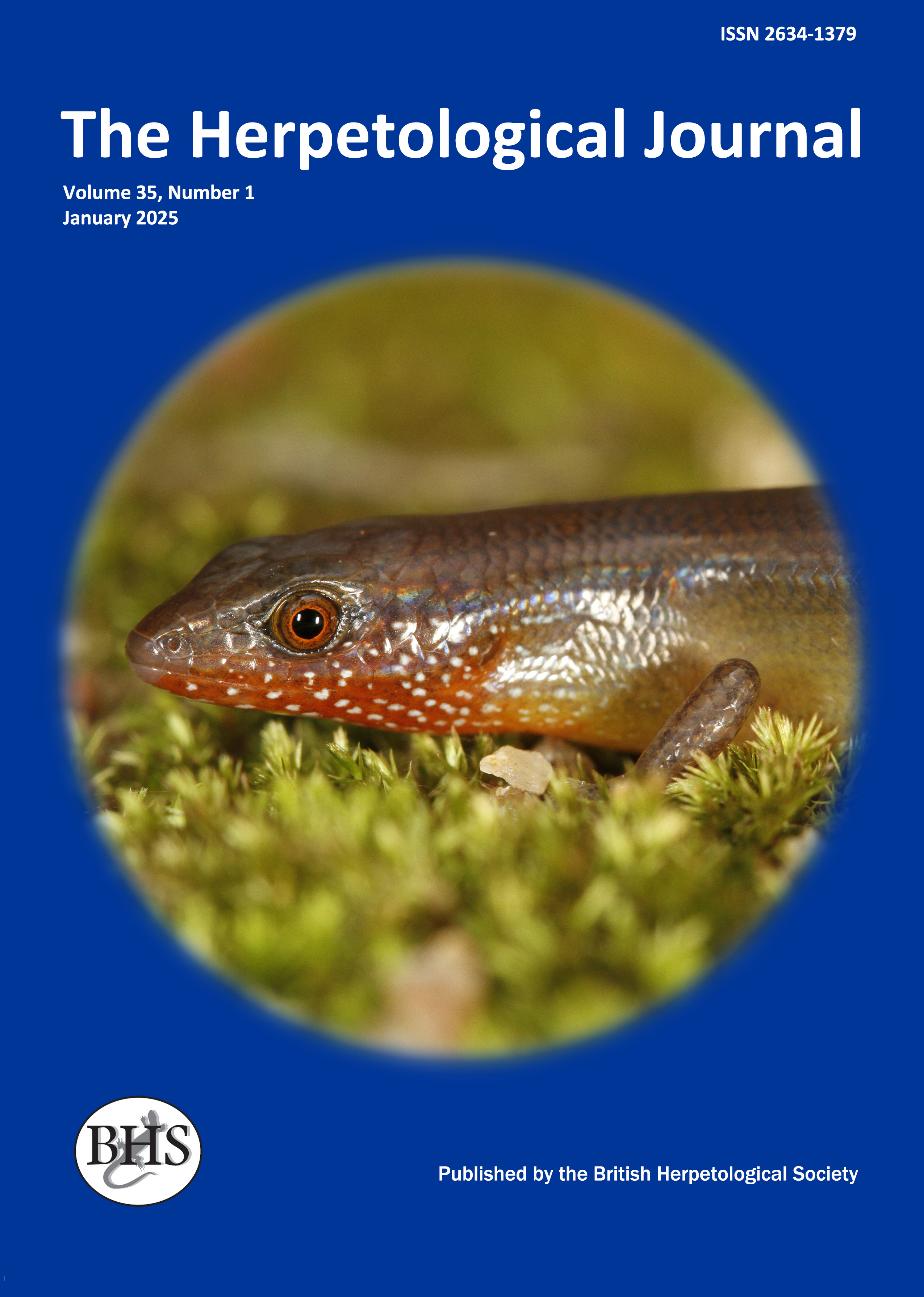
The Herpetological Journal
The Herpetological Journal is the Society's prestigious quarterly scientific journal. Articles are listed in Biological Abstracts, Current Awareness in Biological Sciences,Current Contents, Science Citation Index, and Zoological Record.
ISSN 0268-0130
2021 Impact Factor from Clarivate for the Herpetological Journal is 1.194, an increase of 0.332 from 2020.
pdf 02. Reproductive Biology of the #Glass##Snake# Ophiodes fragilis (Squamata: Anguidae) in South-East Brazil
1470 downloads
Open Access
Authors: Pizzatto, L.
Abstract: The reproductive cycles of tropical lizards can be continuous or seasonal, depending on a wide variety of factors, some of which are historical. Most studies on reproductive biology of lizards have been conducted on species in the Iguanidae, Gekkonidae, Teiidae, Lacertidae, and Scincidae. The few studies on anguid lizards have been on various alligator lizards and one species of Ophisaurus. This study presents data on sexual maturity, adult body size, neonate body size and body mass, fecundity, and male and female reproductive cycles of a population of Ophiodes fragilis from São Paulo and Paraná states in south-east Brazil. Females are larger and attain sexual maturity at a larger SVL than males. The female reproductive cycle is highly seasonal with secondary vitellogenesis starting in the middle of the rainy season (February). Embryos in early stages of development occur in the dry season (June) and parturition occurs at the transition from the dry season to the rainy season (August-December). Clutch size averages 7.5 young and is not related to maternal female size as in many other lizard species. Neonates were 33-57 mm in SVL and 0.45-0.85 g in mass. The residual volume of testes does not vary throughout the year suggesting a continuous spermatogenic cycle. Diameter of the deferent duct is largest from January to March (onset of the rainy season), suggesting that even though males produce sperm continuously, they store sperm until mating season.
Keywords: LEGLESS LIZARD, SPERMATOGENIC CYCLE, REPRODUCTION, REPRODUCTIVE CYCLE, CLUTCH SIZE

